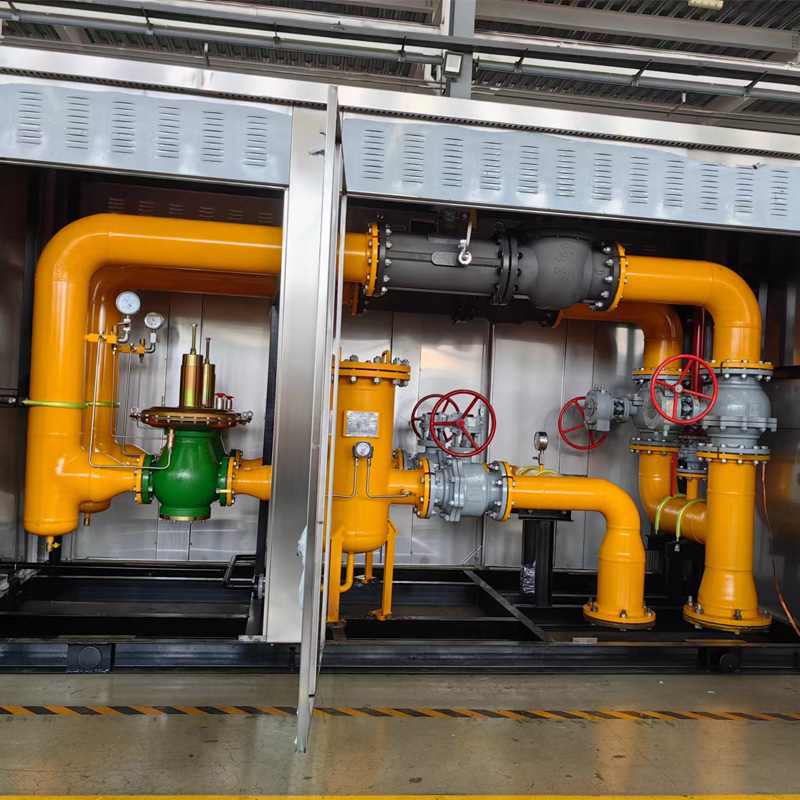
Dec . 17, 2024 08:45
Back to list
pressure reducing regulators
Understanding Pressure Reducing Regulators Essential Components for Stable Operations
Pressure reducing regulators (PRRs) are vital components in various industrial applications, ensuring that gases and liquids are safely and effectively controlled to desired pressure levels. These devices are designed to maintain a steady output pressure despite fluctuations in the inlet pressure or changes in flow rate. This characteristic is crucial for processes that require precise pressure regulation to enhance safety, efficiency, and performance.
How Pressure Reducing Regulators Work
At the heart of a pressure reducing regulator is a mechanism that modulates the pressure of the fluid passing through it. Typically, the PRR consists of a valve that opens and closes in response to changes in downstream pressure. When the downstream pressure exceeds a predetermined set point, the valve closes, reducing the flow of media and consequently the upstream pressure. Conversely, if the downstream pressure falls below the set point, the valve opens to allow more fluid to pass through. This feedback loop ensures that the output pressure remains stable.
Most PRRs employ a diaphragm or piston mechanism to sense changes in downstream pressure. The movement of this sensing element is directly proportional to the pressure changes, allowing for quick adjustments to maintain the desired pressure level. This design is integral for systems where variations in pressure can lead to equipment damage, reduced efficiency, or compromised safety.
Applications of Pressure Reducing Regulators
The applications of pressure reducing regulators are broad and diverse. They are commonly utilized in gas pipelines, steam systems, and various water and wastewater management processes. For instance, in natural gas distribution, PRRs are essential for reducing high pressure from supply lines to safe levels suitable for residential or commercial use. Similarly, in manufacturing, maintaining consistent pressure in pneumatic systems is crucial for the proper function of tools and machinery.
pressure reducing regulators

In healthcare, PRRs have significant applications in anesthesia delivery systems, where they ensure that the gas pressure administered to patients is neither too high nor too low, thus ensuring safety and comfort. Additionally, in laboratories, PRRs are critical for experiments that require precise gas delivery at a specific pressure to guarantee accurate results.
Key Features to Consider When Choosing a PRR
When selecting a pressure reducing regulator, several factors must be considered. First, the pressure range needs to be assessed to ensure that the regulator can handle both the maximum inlet pressure and the required outlet pressure. Additionally, flow rate capacity is crucial; a regulator must be capable of providing adequate flow for the intended application without significant pressure drop.
Material compatibility is another important aspect, as the components of the regulator must resist corrosion and degradation depending on the media being regulated. For instance, regulators used in corrosive environments might require special coatings or materials like stainless steel.
Maintenance and Operational Considerations
Regular maintenance of pressure reducing regulators is essential to ensure long-term reliability and performance. This includes periodic inspections and testing to check for leaks, wear, or blockages. Operators should also be trained to recognize signs of malfunction, such as fluctuating pressure outputs or unusual noise, which can indicate underlying issues that need to be addressed promptly.
In conclusion, pressure reducing regulators play a crucial role in various industries by ensuring consistent and safe pressure levels. Their ability to adapt to changing conditions makes them indispensable in processes ranging from natural gas distribution to healthcare applications. Understanding their operation, applications, and maintenance is essential for professionals working in environments that rely on stable pressure controls.
Latest news
-
Safety Valve Spring-Loaded Design Overpressure ProtectionNewsJul.25,2025
-
Precision Voltage Regulator AC5 Accuracy Grade PerformanceNewsJul.25,2025
-
Natural Gas Pressure Regulating Skid Industrial Pipeline ApplicationsNewsJul.25,2025
-
Natural Gas Filter Stainless Steel Mesh Element DesignNewsJul.25,2025
-
Gas Pressure Regulator Valve Direct-Acting Spring-Loaded DesignNewsJul.25,2025
-
Decompression Equipment Multi-Stage Heat Exchange System DesignNewsJul.25,2025

